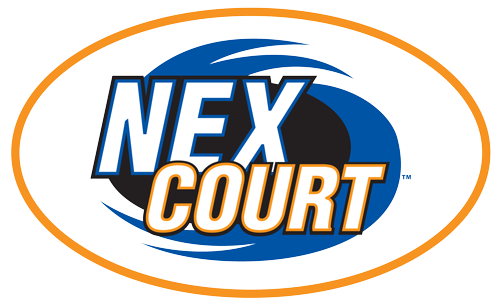FAQs
What You Need to Know to Hire a Court Contractor
Request a Quote
What considerations go into a quote for court construction?
There are quite a few variables. For example, there are features of the property itself that come into play. Is it generally flat? Will we need to do any excavation? Will drainage be altered by the addition of the court? The construction process may also result in the need to move utility lines.
However, the client’s choices also affect the cost. For example:
- The size of the court
- The surface chosen
- Do you want lighting? Fencing?
- How many different sports do you want to play on the court? Do you need basketball goals, tennis, volleyball, and/or pickleball nets?
Give us a call, and we will send an expert to evaluate the space, make recommendations, and discuss your options.
How is the base of the court constructed?
The base of the court is the foundation for making it a durable space for play for years to come. Options include standard concrete or the Sport Court® patented SportBase™. SportBase is an eco-friendly option that eliminates the need for large equipment and mitigates most drainage issues. It offers 2-3 times more shock absorption and is totally portable when a family moves to a new home. With large courts, we use post-tension technology to provide greater stability.
What is the area needed for popular courts?
Following are the standard dimensions of the courts we build. Please note, however, that we can recommend variations that give clients very playable courts that fit within smaller dimensions.
Basketball: A full-size NBA/NCAA basketball court is 94’ x 50’. The standard high school court is slightly smaller. Most clients choose a court with a single goal. If you want a three-point line, the court should be large enough to include 26’ of space from the goal.
Pickleball: A regulation USPA pickleball court is 24’ x 65’. The playing area required is 20’ x 44’. To provide a sufficient perimeter, a 30’ x 60’ court is ideal for competitive play.
Tennis: A full-size tennis court is 60’ x 120’. It has a playing area that is 36’ x 78’.
How long will it take to construct my court?
The same variables that come into play with cost affect the time for construction. However, clients should be aware that if a concrete base is being used, it will need to “cure” for 30 days before the surfacing and any fencing, lights, etc. can be installed.
Are you licensed in the State of Texas? In Oklahoma? Are you bonded and insured?
Texas does not require licensing for general contractors, but if a municipality does, we will be licensed there. If a project requires electricians, we will use only licensed professionals. We are bonded and insured.
What is the Sport Court® limited warranty?
The Sport Court limited warranty covers the tile surfacing for 10 years. This is a valuable warranty, since an acrylic-surfaced court that gets regular use can be expected to last no more than 4-5 years. When a Sport Court is used in a private setting like a backyard, the tiles are likely to last far longer than 10 years.
Can you build a court on a sloped yard?
Yes. We can use excavating machines to create a flat surface when necessary.
Will the construction of the new court leave me with drainage issues?
No. If the Sport Court Sport Base™ is used, the foundation of the court incorporates natural drainage. With other court foundations, if the new court affects drainage, we will redesign and reroute the drainage.
Can we visit courts you have built in our area?
Yes. Ask about the location of our model courts. You may also want to check the gallery for public courts near you that we have built.
Do you lay indoor gym court floors?
Yes. The Sport Court® indoor flooring is second to none in durability, safety, and ease of maintenance. There are several flooring options designed for different levels of use. Give us a call, and we can help you make the most appropriate choice for usage and budget.
